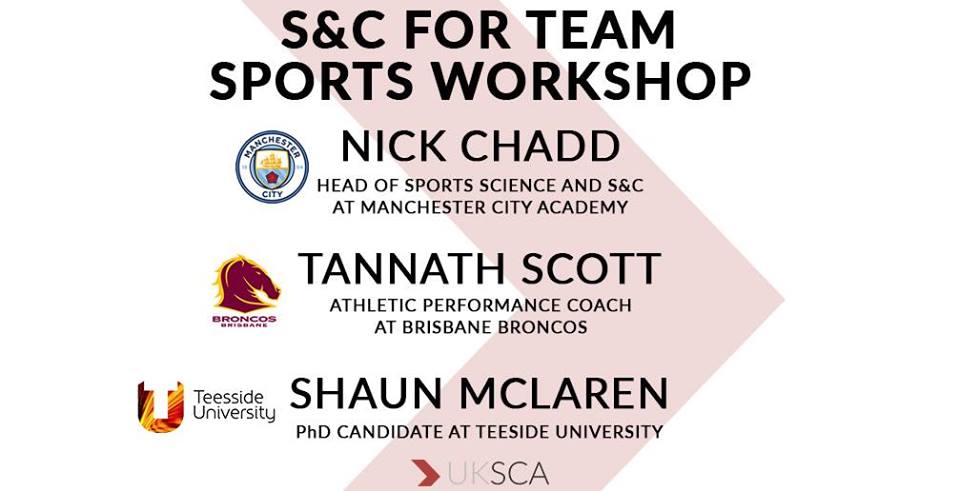On June 27th, I made the 4.5 hour drive from Edinburgh to Leeds to attend the “S&C for Team Sports” workshop run by the UKSCA at Leeds Beckett University. Overall it was both informative and beneficial.
Tannath Scott of the Brisbane Broncos presented on the overall philosophy of both the conditioning and strength/power programming at the club. It was interesting to hear that he utilises a philosophy of “Getting the big rocks in place” before focussing on the 1% marginal gains, in opposition to the popular perspective of British Cycling. Additionally, Tannath discussed how they use minimal variation in exercise selection, focussing primarily on squat/Olympic lifting variations, but getting the variation from changing the variables used (sets/reps/intensity). Another impactful point was the focus on work ethic within the club and the “no talent required” ethos building of hard workers.
Shaun McLaren of Teeside University discussed the practical application of statistics in strength and conditioning. Particularly focussing on utilising smallest worthwhile change (SWC) in order to ascertain what is meaningful increase/decrease and what is just the noise of individual variation or testing error. He showed some templates from Will Hopkins Sport Science website which can be adapted for use within your own context. Additionally there was the discussion regarding getting the SWC from published articles, from your own specific population data or from 0.2 x Standard Deviation (I believe!). I’m still coming to terms with all the data analysis and interpretation from this, so will be re-reading the powerpoints to fully digest it!
Tannath and Shaun then did a combined act discussing the application of statistics in the day to day practice at Brisbane Broncos and how this informs decision making on changes to the planning based on daily monitoring measures (adductor squeeze, GPS etc.). They showed multiple seasons of data for various measures for individual players. What was interesting was Tannath’s reluctance to let athletes reduce workload in response to metrics, but rather focussing on increasing the number of recovery modalities. This gave a real-life perspective on how statistics actually work in a professional strength and conditioning setting and what decisions result from it.
The final speaker Nick Chadd of Manchester City Football Academy asked that his presentation and content not be shared openly, so I will respect his wishes and not discuss this here. However, I can say that it was insightful, applicable and very helpful for anyone working within a youth academy setting.
A huge thanks to speakers who did a great job, but also to the UKSCA and Rob Pacey (Pacey Performance) for his input in helping to organise and run the evening. If you attended the event, I’d love to hear your take home messages from it and how you’re applying it to your coaching!
For more content like this please follow us on Facebook!
Are you a grassroots youth sport coach or PE teacher who wants to improve the athleticism of your athletes?? Check out our Fundamental series athletic development programs here.
S&C for Team Sports UKSCA Workshop Review

